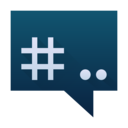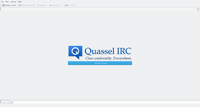Quassel: Difference between revisions
m (Add github link) |
(Marked this version for translation) |
||
| Line 53: | Line 53: | ||
* [http://bugs.quassel-irc.org/projects/quassel-irc Bug reports and feature requests] | * [http://bugs.quassel-irc.org/projects/quassel-irc Bug reports and feature requests] | ||
<!--T:15--> | |||
* [https://github.com/quassel/quassel Github repository] | * [https://github.com/quassel/quassel Github repository] | ||
Latest revision as of 20:48, 2 November 2018

|
Quassel IRC is a modern, cross-platform, distributed IRC client. |
Features
 |
- Quassel has a modern GUI with dockable nicklist and topic bar and customizable views.
- Quassel is cross-platform. That means that it will run under Linux, MacOS, and Windows.
- Quassel optionally supports a stand alone so called core that can stay connected to the IRC channels. One or more Quassel clients can connect to the core and continue chatting where ever they left the network. That includes a kind of BNC functionality so that you can follow the discussions that happened during your absence.
FAQ
- Why is there no menu item?
- This is because Quassel has a different approach to logging in and out of a chat. You can or . If you hide a chat temporarily, the chat will remain active till you unhide it. If you want to remove a channel completely, for example because you entered it accidentially and it does not exist, do the following: Select the channel, right-click, choose .
- Why is it named Quassel?
- "quasseln" is a familiar German expression for "talking".
- What do the colors mean?
- gray - inactive
- black - normal
- blue - there are unread messages
- orange - someone called your name
- green - other activity
- You can change the colors under
